What Is The Autism Wheel?
Understanding Autism: A Comprehensive Exploration of Interventions and Approaches

Exploring the Concept of the Autism Wheel
The term 'Autism Wheel' often symbolizes the diverse aspects of autism spectrum disorder (ASD) and the range of interventions designed to support individuals affected by it. While the concept isn't defined by a single clinical model, it reflects the multifaceted nature of autism and the variety of therapeutic approaches tailored to individual needs. This article delves into the core therapies and interventions, focusing on Applied Behavior Analysis (ABA) and its derivatives, alongside complementary methods, to provide readers with a clear understanding of current practices and philosophies within autism support.
Foundations of Applied Behavior Analysis (ABA)

What is Applied Behavior Analysis (ABA)?
Applied Behavior Analysis (ABA) is a scientific approach rooted in learning theory, primarily used to bring about behavioral changes in individuals with autism. This therapy relies on carefully manipulating the environment to encourage socially meaningful behaviors. Unlike some older practices, modern ABA emphasizes positive reinforcement and deliberately avoids aversive punishment techniques.
Role of Learning Theory in ABA
ABA draws heavily from the principles of learning theory. It focuses on how behaviors can be increased or decreased based on their consequences within a person's environment. The approach not only encourages the acquisition of new skills but also reduces behaviors that might be harmful or limiting. This is done by reinforcing desired behaviors while minimizing undesirable ones.
Purpose and Goal of ABA Therapy
The core aim of ABA therapy is to enhance a child’s independence and ability to participate fully in society. It does this by building on each child’s unique strengths rather than trying to alter their core identity or neurodiversity. Importantly, ABA techniques are designed to foster joy and autonomy by incorporating the child’s own interests and emphasizing individualized goals. The intent is not to make children appear neurotypical but to help them thrive according to their own abilities and needs.
Early Intensive Behavioral Intervention (EIBI) and Its Importance
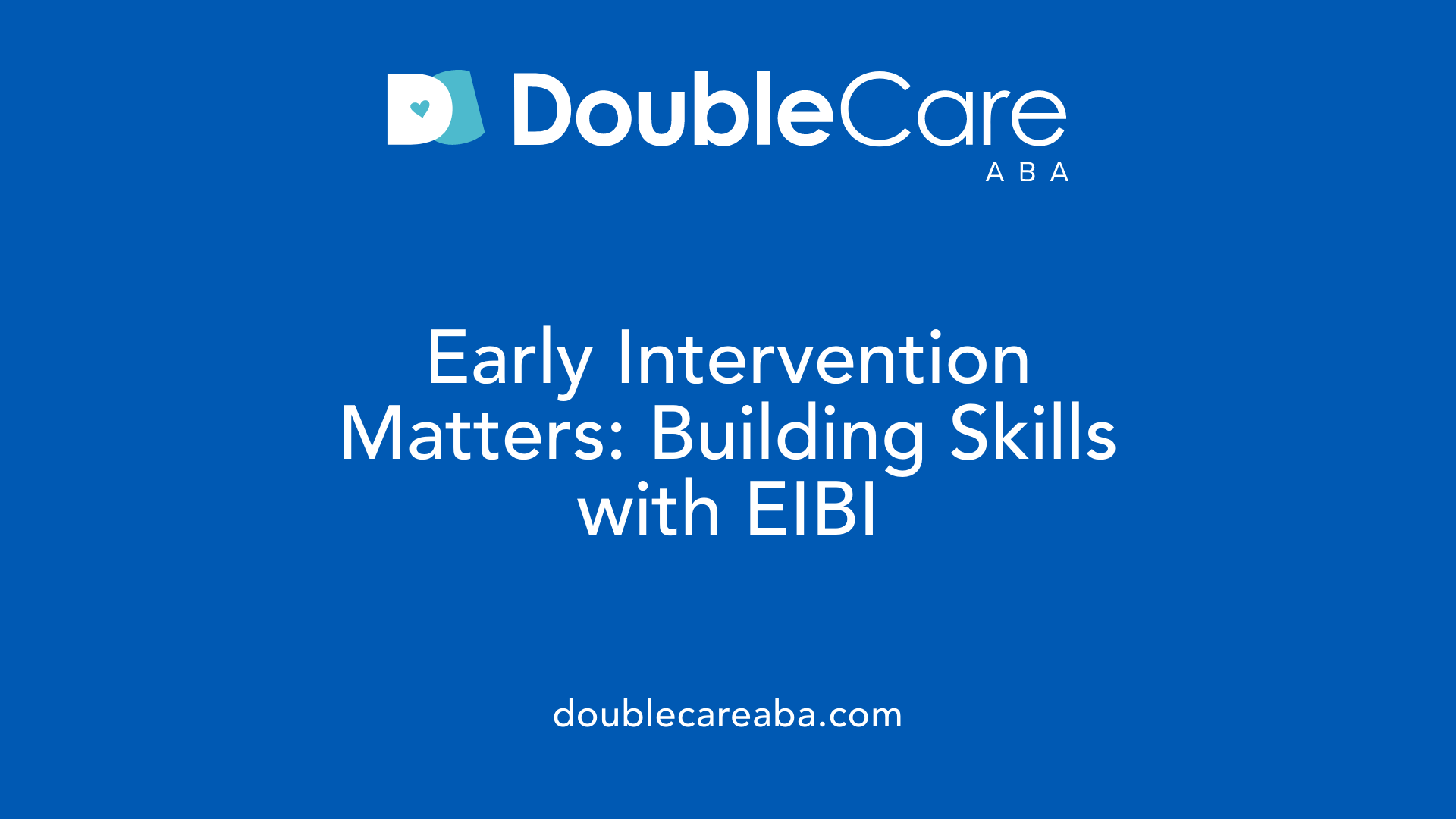
What is Early Intensive Behavioral Intervention (EIBI)?
Early Intensive Behavioral Intervention, or EIBI, is a well-established approach rooted in Applied Behavior Analysis (ABA) principles. It is designed specifically for young children with autism spectrum disorder (ASD) and focuses on improving their intellectual abilities and adaptive behaviors. By applying structured behavioral techniques early in life, EIBI helps children develop essential life skills that promote greater independence and social participation.
Why is early intervention crucial?
Intervening early, preferably before a child reaches 3 years of age, is vital for achieving the most significant developmental gains. Research indicates that when EIBI is administered intensively—usually a few hours every day over a span of 2 to 4 years—children show substantial progress in communication, cognitive skills, and adaptive functioning. These early efforts take advantage of the brain's heightened plasticity during this critical period, maximizing the positive impact of therapy.
Effectiveness and Recommended Protocols
EIBI has consistently been shown to enhance intelligence and adaptive behaviors among children with ASD. The intervention is intensive, structured, and individualized, ensuring that therapy targets each child's unique strengths and needs. Early initiation coupled with consistent, long-term application of these strategies enables children to achieve notable improvements in areas such as language acquisition, social interaction, imitation, and self-care.
By prioritizing early, focused, and sustained intervention, EIBI plays a crucial role in setting the foundation for more positive developmental trajectories in children with autism.
Naturalistic Developmental Behavioral Interventions (NDBI) Explained

What are Naturalistic Developmental Behavioral Interventions (NDBI)?
Naturalistic Developmental Behavioral Interventions (NDBI) are specialized approaches for supporting young children with autism that combine well-established behavioral techniques with developmental strategies. Unlike traditional behavior modification methods that may rely on repetitive drills, NDBI integrates learning within natural, play-centered environments. One popular example is the Early Start Denver Model (ESDM), which emphasizes engaging children in everyday routines to encourage learning through interaction and motivation.
How do NDBI therapies impact children?
NDBI therapies have shown significant effectiveness in improving crucial skills among children with autism. By using play-based, naturalistic methods, these interventions enhance social skills, communication, imitation, and social initiation. Children are guided to build on their existing strengths while learning functional behaviors in settings that feel familiar and enjoyable. This approach promotes greater generalization of skills beyond therapy sessions, fostering meaningful social engagement and better communication abilities.
Combining Behavioral and Developmental Approaches
The strength of NDBI lies in its hybrid method—drawing from behavioral principles such as reinforcement to shape behaviors, while also incorporating developmental considerations like the child's interests and emotional state. This encourages learning in a way that feels supportive and child-centered, contrasting with more rigid or aversive techniques. NDBI prioritizes fostering autonomy and joy in learning, which helps children maintain their individuality as they develop essential skills.
In summary, NDBI therapies like the Early Start Denver Model offer a scientifically backed and compassionate option for early autism intervention that improves social and communication outcomes by immersing children in naturalistic, engaging learning experiences.
Focus on Social Skills and Communication: Targeted Interventions
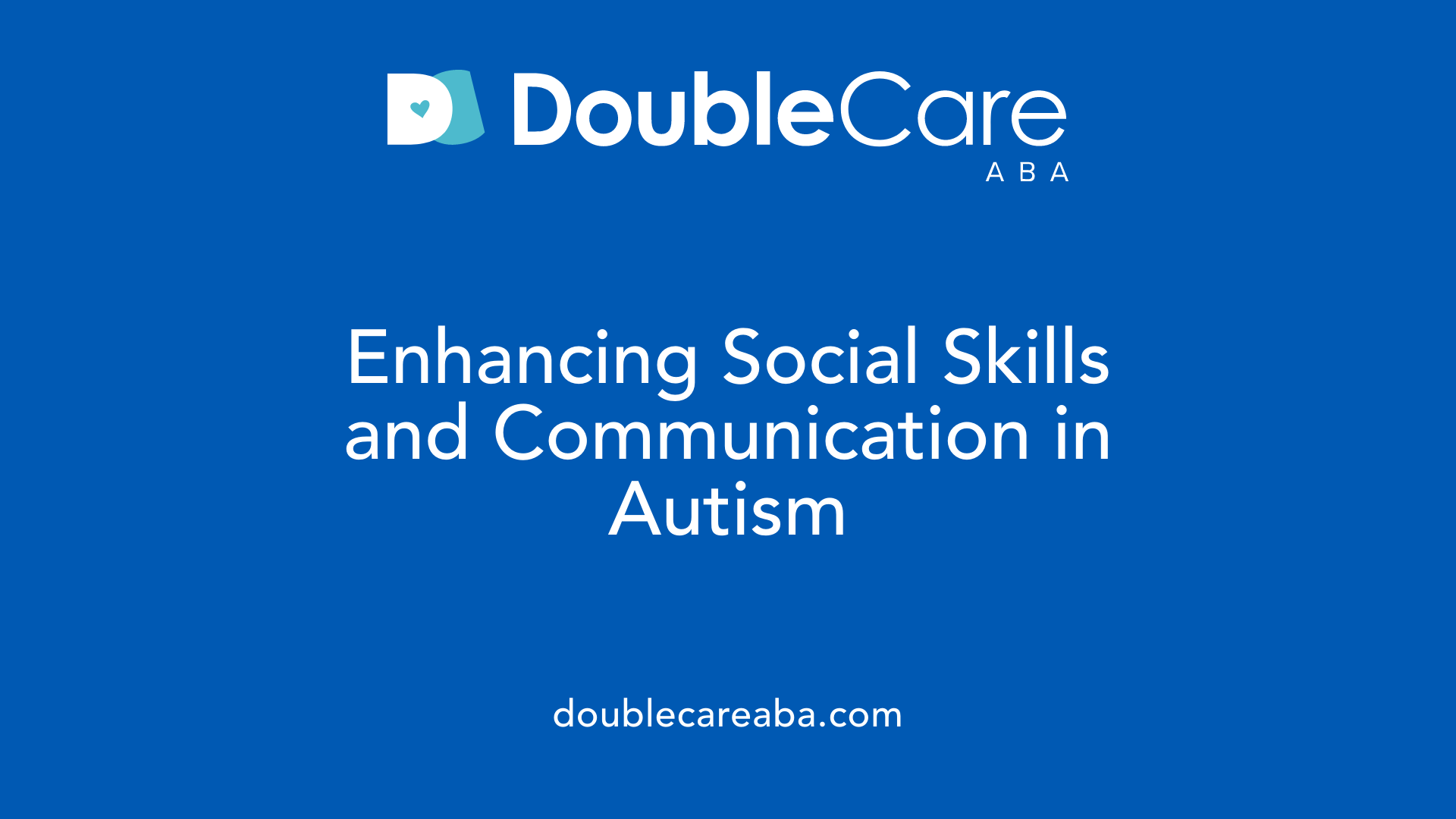
What interventions help improve social skills in autism?
Targeted interventions such as Social Skills Training (SST) and the Picture Exchange Communication System (PECS) are instrumental in boosting social interaction and communication abilities in individuals with autism.
SST is designed to teach specific social behaviors and improve interpersonal skills through structured activities and role-playing scenarios. This training helps individuals better understand social cues, initiate conversations, and maintain relationships.
PECS supports communication, especially for children with limited verbal skills. It involves the use of pictures to facilitate expression of needs and ideas, fostering more effective and functional communication.
Both SST and PECS have demonstrated efficacy in clinical studies, showing improvements not only in social engagement but also in the initiation of social interactions and language use. When combined with broader approaches like Naturalistic Developmental Behavioral Interventions (NDBI), these focused strategies create a comprehensive framework to enhance communication and social participation in autism spectrum disorder.
Integrating these interventions early and consistently helps maximize progress, making socially significant skills more accessible and reinforcing positive communication patterns.
Addressing Behavioral Challenges: Sleep, Eating, and Toilet Training

How are behavioral problems like sleep and eating addressed in autism therapy?
Behavioral challenges such as sleep difficulties, eating issues, and toilet training are common concerns for individuals with autism. Applied Behavior Analysis (ABA) techniques offer effective strategies to manage these problems.
One widely used method is fade bedtime, where the bedtime is gradually adjusted to help establish a consistent and comfortable sleep routine. This gentle approach reduces resistance and fosters better sleep habits over time.
Contingent reinforcement is another strategy whereby positive behaviors, like staying in bed or eating appropriate foods, are rewarded immediately. This encourages the repetition of those desired behaviors by linking them with positive outcomes.
Stimulus control involves modifying environmental cues to promote the intended behavior. For example, creating a specific and calming bedroom environment can signal it's time for sleep, helping the individual associate that space with restful activities.
In practicing eating and toilet training, these behavioral techniques are tailored to the individual's needs, making progress more attainable and less stressful. Such structured behavioral interventions have proven effective in improving adaptive skills in children with autism.
By applying these targeted behavioral methods, therapists and caregivers can help individuals with autism develop healthier routines, enhancing their overall well-being and independence.
Cognitive Behavioral Therapy (CBT) for Emotional Well-being

Is Cognitive Behavioral Therapy effective for people with autism?
Cognitive Behavioral Therapy (CBT) has proven effective for adolescents and adults with autism, particularly in addressing common emotional challenges such as anxiety and depression. This therapeutic approach focuses on helping individuals understand and manage their thoughts and feelings, which can be especially beneficial given the heightened emotional difficulties often experienced by people on the autism spectrum.
CBT for autism is specifically adapted to accommodate the unique cognitive styles and communication preferences of those with ASD. Therapists tailor interventions to be more concrete, use visual aids, and incorporate the individual's special interests to enhance engagement and comprehension.
By focusing on emotional regulation and coping mechanisms, CBT supports improved emotional well-being and quality of life. The therapy's success underscores its role as a valuable tool in autism interventions beyond early childhood, addressing needs throughout adolescence and adulthood.
The Role of Parent-Mediated Interventions (PMI)
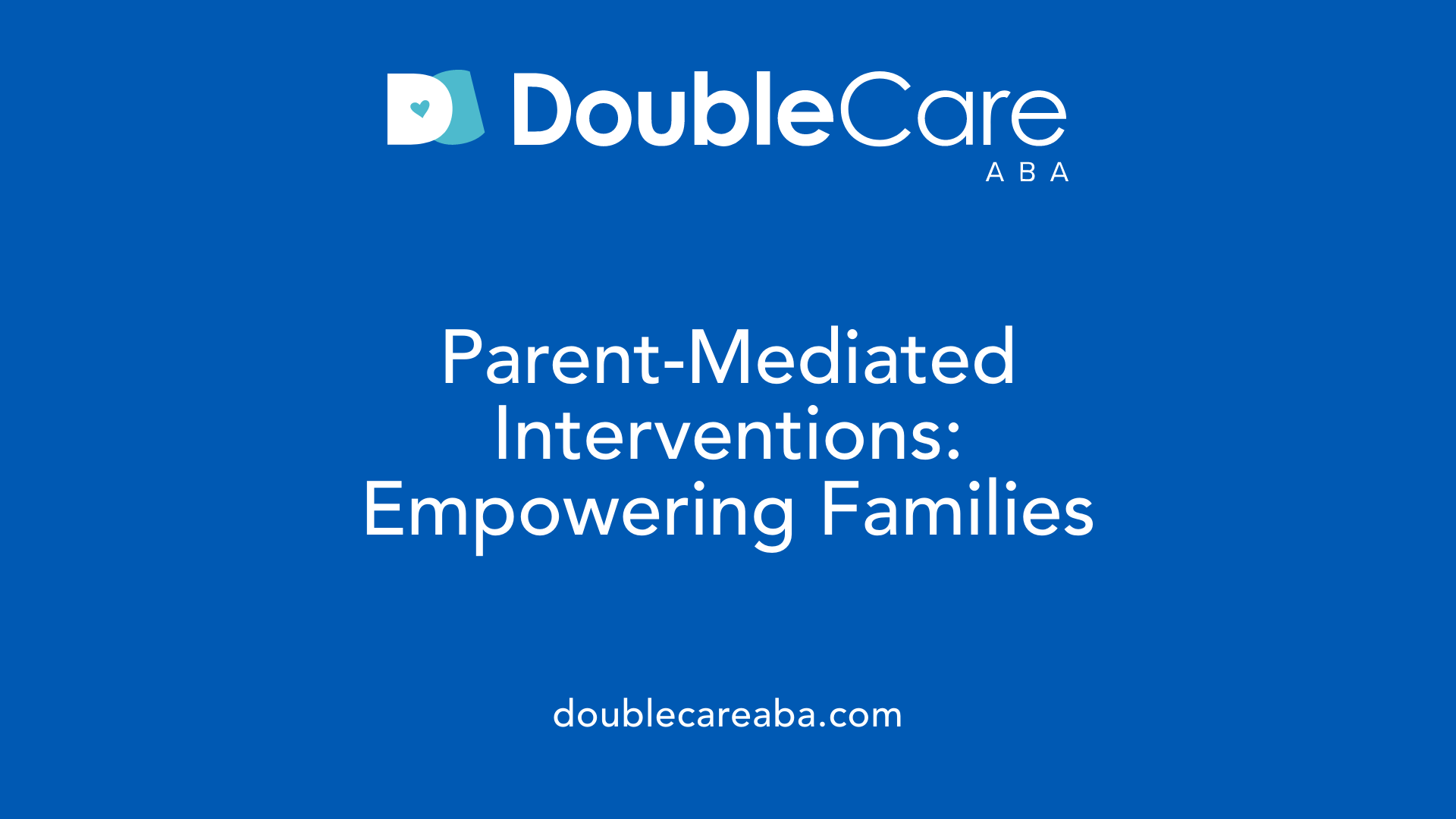
What are parent-mediated interventions in autism?
Parent-mediated interventions (PMI) in autism involve training parents to implement behavioral strategies and techniques directly with their children. This empowers families to become active participants in therapy, extending learning opportunities beyond clinical or school environments.
Training parents as interventionists
PMI programs equip parents with the skills needed to reinforce positive behaviors, support communication development, and manage challenging behaviors effectively. Training typically focuses on helping parents understand autism-specific needs and how to use natural interactions throughout daily routines to promote skill acquisition.
Benefits of increased accessibility and generalizability
By involving parents, PMI increases accessibility to intervention services, particularly for families with limited access to specialized providers. Interventions delivered by parents can occur consistently in natural settings, making the skills learned more generalizable to everyday life. This consistency helps sustain progress over time.
Improvement in communication and reduction of challenging behavior
Research shows PMI leads to noticeable improvements in children's communication abilities and social engagement. Additionally, when parents are trained to recognize and respond appropriately to challenging behaviors, incidents decrease, fostering a more positive family environment.
Overall, parent-mediated interventions harness the unique role of parents to enhance the effectiveness of autism therapies, promoting lasting skills and improved quality of life for children with autism spectrum disorder.
Modern Approaches to ABA: Reinforcement and Engagement

How has ABA therapy evolved in recent years?
Modern Applied Behavior Analysis (ABA) therapy has shifted significantly from its early practices. Today, it predominantly relies on reinforcement strategies rather than aversive punishment techniques. This evolution reflects a compassionate and ethical approach that prioritizes positive behaviors through encouragement and rewards.
Use of reinforcement strategies over punishment
Reinforcement strategies are now central to ABA, aiming to increase desirable behaviors by offering positive outcomes when those behaviors occur. This contrasts with earlier methods that sometimes used punishment to reduce unwanted behaviors. The modern approach focuses on supporting children's growth in a respectful and supportive manner.
Play-based and naturalistic settings
Therapy sessions are often conducted in play-based, naturalistic environments that feel comfortable and engaging for the child. Instead of repetitive drills, children learn through interactive, enjoyable activities that integrate learning into everyday experiences. This approach helps children remain motivated and interested, fostering a more positive learning atmosphere.
Enhancing engagement and generalization of skills
By practicing skills in real-life contexts and using the child's interests, modern ABA helps children apply learned behaviors beyond therapy sessions. This generalization is crucial for improving independence and functioning in daily life. Engagement is heightened by tailoring sessions to the child’s preferences, making learning both fun and meaningful.
Together, these advances ensure that ABA therapy supports children with autism in a holistic, respectful manner—enhancing not only skill acquisition but also joy and autonomy in learning.
Balancing Therapy Goals with Respect for Neurodiversity

Does ABA aim to change a child's core identity?
Applied Behavior Analysis (ABA) primarily focuses on modifying behaviors through environmental changes without trying to alter how children think or feel. This means the therapy respects neurodiversity by not targeting the child’s core identity or unique neurological makeup. Instead, ABA emphasizes individualized goals tailored to each child’s strengths and interests. The ultimate aim is to promote independence and societal participation while building on what the child can do, rather than forcing conformity.
What controversies exist around ABA and neurodiversity?
Despite its many benefits, ABA faces debate regarding its approach to neurodiversity. Some critics argue that early versions of ABA prioritized making children appear neurotypical, potentially undermining a child’s unique traits. There are concerns that this emphasis on conformity may overlook individual needs or the value of neurodiversity itself. However, modern ABA practices strive to avoid these issues by focusing on tailored interventions that foster joy and autonomy instead of simply enforcing typical social behaviors.
Overall, contemporary ABA approaches attempt to balance effective behavioral support with deep respect for each child's individuality. By concentrating on meaningful skill development through positive reinforcement and honoring personal strengths, ABA aims to be both beneficial and affirming. This nuanced approach helps ensure that therapy supports children’s growth without compromising who they are.
Speech Development and Autism: Outcomes of Early Intensive Intervention
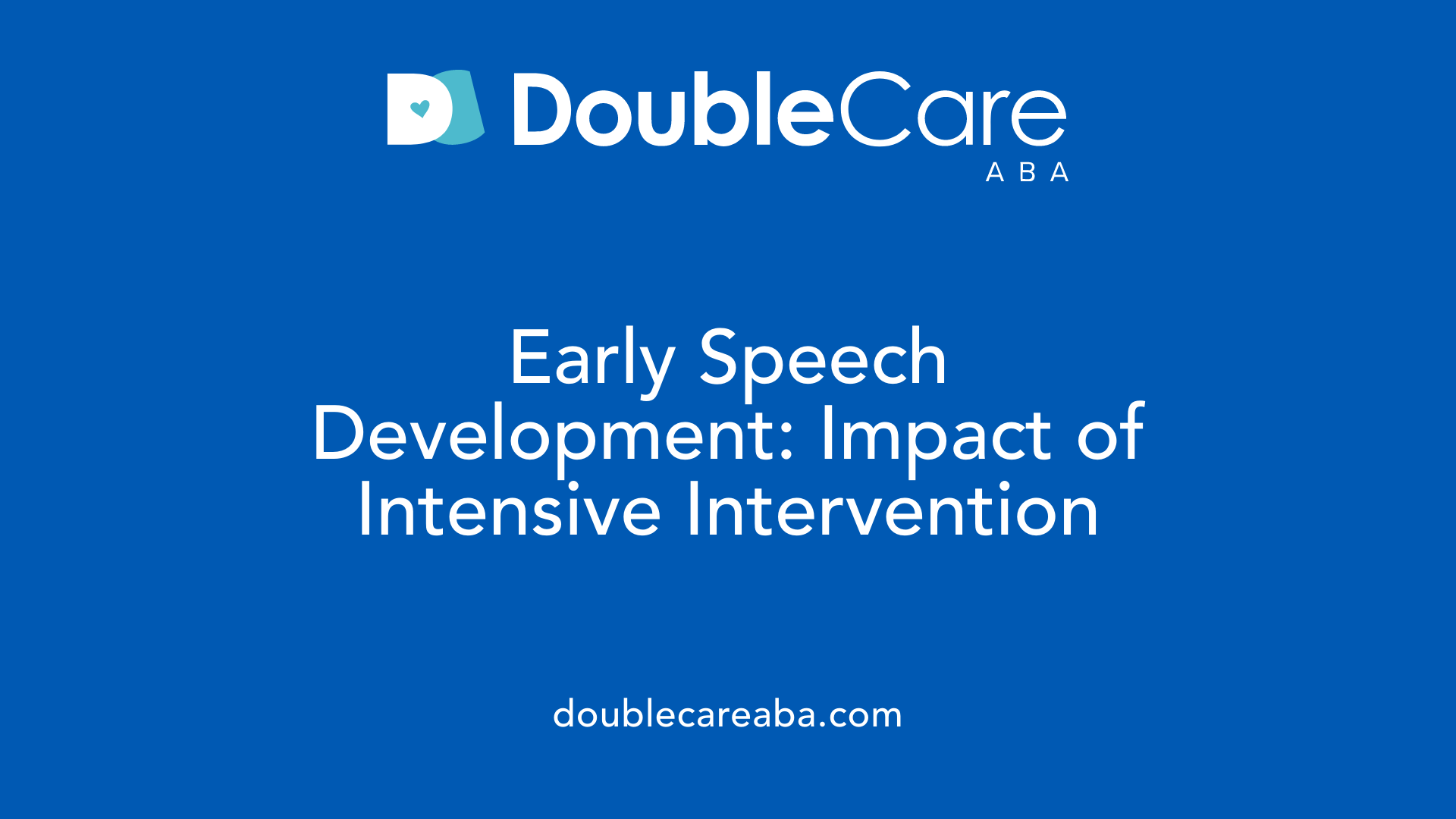
How does early intensive intervention affect speech development in autism?
Early intensive intervention, particularly Applied Behavior Analysis (ABA), plays a significant role in improving speech development among children with autism. Studies have consistently shown that children who are less severely impacted by ASD benefit most in terms of language skills when interventions begin early—ideally before the age of three.
This early window allows therapies such as Early Intensive Behavioral Intervention (EIBI) to effectively target communication capabilities. By using reinforcement strategies, children are encouraged to develop verbal skills in a naturalistic setting, which helps generalize language use beyond therapy sessions.
Improvements aren't limited solely to speech but extend to overall adaptive behaviors, which facilitate better communication and social interaction. This targeted approach builds on the child’s existing strengths and interests, promoting autonomy and engagement rather than repetitive drills that lack context.
In summary, early intensive ABA interventions effectively enhance speech development, especially in those with milder symptoms of autism, by leveraging scientifically grounded behavioral principles in a supportive, individualized manner.
ABA Therapy in Everyday Life: Play and Natural Settings

How is ABA therapy delivered to make it effective?
ABA therapy is most effective when it is delivered in a way that engages children naturally. Instead of relying on repetitive drills, modern ABA typically employs play-based and naturalistic settings. This approach makes learning enjoyable and meaningful, increasing a child's motivation and participation.
Use of play to facilitate learning
Play serves as a powerful tool in ABA therapy. Through playful interactions, therapists can teach important skills like communication, social interaction, and imitation. Children are more likely to practice new behaviors when activities feel like fun rather than work. This also helps to reduce resistance and build positive associations with learning.
Benefits of naturalistic environments for skill generalization
Delivering ABA in natural environments—such as at home or in community settings—helps children apply skills beyond therapy sessions. When children learn in familiar surroundings, they can better generalize what they’ve learned to everyday life, increasing their independence. This practical skill transfer also supports social participation and improves adaptive behaviors.
By focusing on play and natural surroundings, ABA therapy not only teaches new behaviors but also promotes joy and autonomy. This aligns with the goal of building on each child’s strengths without trying to change their core identity.
Enhancing Independence and Societal Participation through ABA

What is the focus of ABA in terms of long-term outcomes?
Applied Behavior Analysis (ABA) prioritizes improving independence and societal participation in individuals with autism. Rather than aiming to change a child's core identity or neurodiversity, ABA builds on the child's unique strengths and interests. This approach sets functional goals that support autonomy in everyday activities.
ABA interventions work by promoting socially significant behaviors through environmental manipulation. The objective is to equip children with practical skills that enhance their ability to engage effectively in various social contexts. By focusing on functional skills such as communication, self-care, and social interaction, ABA encourages meaningful participation rather than enforcing conformity to neurotypical standards.
Practitioners emphasize individualized goal-setting that respects each child's preferences and motivations. This personalized approach fosters joy and self-determination during therapy, making learning both engaging and relevant. Early intensive ABA interventions often lead to improvements in speech and adaptive behaviors, particularly in children with less severe autism symptoms.
Ultimately, ABA's success lies in empowering children to become more independent and confident, enabling them to navigate societal environments with greater ease and satisfaction.
Important Considerations for Duration and Intensity of Therapy

What is the recommended intensity and duration for effective autism intervention?
Early intervention is crucial, ideally beginning before the age of 3, to support children with autism spectrum disorder (ASD) in reaching their full potential. The most effective programs generally involve administering therapy for several hours each day — typically ranging from 2 to 6 hours — over a period of 2 to 4 years. This consistent and sustained approach helps children maximize developmental gains in areas such as language, social skills, and adaptive behaviors.
Recommended daily hours and total duration
Applied Behavior Analysis (ABA) interventions, including Early Intensive Behavioral Intervention (EIBI) and Naturalistic Developmental Behavioral Interventions (NDBIs) like the Early Start Denver Model (ESDM), are designed to be intensive and repetitive but delivered in engaging, play-based settings. The recommended intensity is often about 20 to 40 hours per week, totaling hundreds of hours annually, to ensure meaningful progress.
This level of commitment allows children to generalize new skills across different environments and situations, providing foundation for independence and improved societal participation later in life.
Impact on effectiveness and readiness for transition
Research shows that early intensive and appropriately timed interventions result in improved intelligence, communication, and social initiation skills. Children who receive intervention for 2 to 4 years tend to demonstrate better preparedness for school and more adaptive functioning.
A transition plan typically follows the intensive phase, where therapy intensity may gradually decrease as children gain greater independence, requiring careful monitoring to maintain progress without overwhelming them.
Thus, the duration and intensity of behavioral interventions are vital factors that directly influence the quality of outcomes and a successful transition to less intensive supports.
The Spectrum of Behavioral Interventions Beyond ABA

Are there effective autism interventions besides ABA?
Absolutely. While ABA remains a foundational therapy for autism, a range of other interventions complements and broadens the scope of behavioral support.
Naturalistic Developmental Behavioral Interventions (NDBI), such as the Early Start Denver Model (ESDM), blend behavioral principles with developmental strategies to enhance social and communication skills in young children. These programs are often play-based and focused on interaction in more natural settings.
Focused therapies like Social Skills Training (SST) and the Picture Exchange Communication System (PECS) specifically target social interaction and communication. They are essential for supporting children in navigating everyday social experiences and improving expressive abilities.
Cognitive Behavioral Therapy (CBT) is particularly effective for adolescents and adults on the spectrum facing emotional challenges such as anxiety or depression. CBT addresses these difficulties by teaching coping strategies and emotional regulation rather than directly modifying core autistic behaviors.
Parent-mediated interventions empower caregivers with skills to implement therapeutic strategies at home, thereby increasing intervention accessibility and enhancing generalization of skills.
Together, these therapies complement ABA by addressing a wider range of developmental and emotional needs, offering a comprehensive approach to intervention that respects individual differences and promotes holistic growth.
The Evolution and Ethical Dimensions of Autism Therapy
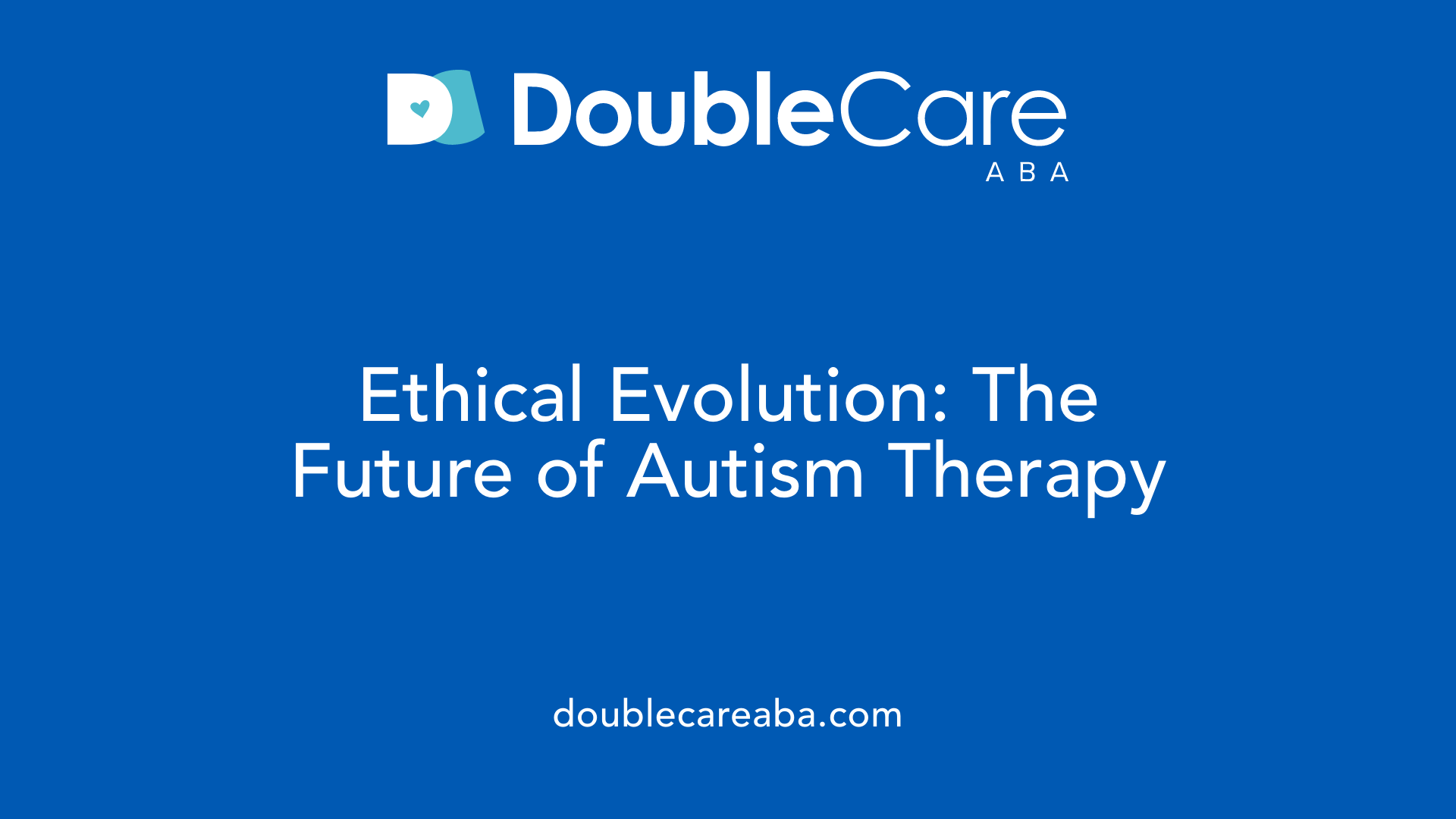
How has the ethical approach to autism therapy evolved?
Applied Behavior Analysis (ABA) has undergone significant ethical evolution since its inception. Initially, early ABA methods sometimes included aversive punishment techniques, which involved unpleasant stimuli to reduce unwanted behaviors. However, these methods have largely been replaced by positive reinforcement strategies that prioritize the individual's well-being.
Shift towards ethical and positive reinforcement models
Modern ABA focuses on reinforcement techniques that encourage desirable behaviors without the use of punishment. Therapists tailor interventions to each child's unique strengths and interests, delivering therapy often in naturalistic, play-based settings. This approach not only improves engagement but also enhances the generalizability of skills learned.
Role of practitioners in fostering autonomy and joy
Practitioners today emphasize individualized goals that build on a child's preferences to promote both autonomy and joy in learning. The primary aim is to improve independence and social participation by supporting the child's development without attempting to alter their core identity or neurodiversity.
| Era | Methodology | Ethical Considerations |
|---|---|---|
| Early ABA (1970s) | Use of aversive punishment | Raised concerns over distress and long-term effects |
| Modern ABA (Present) | Positive reinforcement, naturalistic | Emphasizes individuality, autonomy, and positive outcomes |
This transition reflects a broader understanding of the importance of respecting neurodiversity and designing therapy that empowers rather than conformity-pressures individuals with autism.
Practical Tips for Families Considering Autism Therapy
What should families consider when choosing autism therapy?
Families looking for effective autism therapy should prioritize individualized treatment plans tailored to their child's unique strengths, needs, and interests. Personalized approaches that build on what the child enjoys can foster joy, autonomy, and more meaningful progress.
Importance of individualized therapy plans
Autism therapies like ABA or NDBI are most successful when goals are specific to the child’s abilities and challenges rather than applying a one-size-fits-all method. Individualization ensures interventions enhance independence and participation in society without trying to alter the child’s core identity.
Involvement of family and caregivers
Parent-mediated interventions play a critical role by empowering caregivers with strategies to support skill-building and behavioral improvements at home. Active family involvement not only increases the accessibility of therapy but also helps generalize skills into everyday environments.
Need for professional consultation and ongoing assessment
Professional guidance is essential throughout the therapy journey. Regular assessments enable tracking progress and refining goals, ensuring the therapy remains effective and aligned with the child’s evolving needs. Consulting specialists will assist families in navigating the diverse intervention options available.
Choosing autism therapy is a collaborative process emphasizing personalization, caregiver participation, and ongoing professional support to achieve the best outcomes for each child.
Measuring Success and Adjusting Autism Interventions
How is effectiveness measured in autism therapy?
Effectiveness in autism therapy is evaluated through the use of individualized, measurable goals tailored to each child's unique needs. Therapists establish specific targets related to skills such as communication, social interaction, and daily living activities.
Progress is continuously tracked using systematic data collection, which allows practitioners to see real-time improvements or challenges. This ongoing evaluation ensures that interventions remain relevant and effective.
Adjustments to therapy are made based on these outcomes. If a particular method does not yield expected progress, therapists adapt by modifying techniques or introducing new strategies that better align with the child’s interests and developmental levels.
Flexibility in the therapeutic approach is crucial, especially given that autism encompasses a broad spectrum of abilities and behaviors. By responsively tailoring interventions, such as Early Intensive Behavioral Intervention (EIBI) or Naturalistic Developmental Behavioral Interventions (NDBI), therapy remains individualized and goal-oriented.
This dynamic process ultimately supports increased independence and social participation, promoting meaningful and sustained improvements in the child's quality of life.
Looking Forward: Future Directions in Autism Support
What are future directions in autism intervention?
Future directions in autism intervention are increasingly focused on blending innovative research from both developmental and behavioral sciences. This integration aims to craft therapies that not only promote skill acquisition and independence but also honor the unique neurodiversity of each individual.
The field is moving away from traditional approaches that prioritize conformity, instead emphasizing personalized goals tailored to the child's strengths and interests. This shift helps foster joyful learning experiences and autonomy.
Naturalistic and play-based methods continue to gain traction, working in tandem with reinforcement techniques to enhance communication, social skills, and adaptive behaviors in a way that feels meaningful and engaging for autistic individuals.
Alongside therapeutic innovations, ongoing dialogue is addressing concerns about whether interventions should aim to make children appear neurotypical or support diverse expressions of identity. Advocates and practitioners alike stress the importance of individualized care that respects the child's authentic self rather than focusing solely on normalization.
As a result, future autism support strategies will likely be characterized by flexible, informed, and compassionate approaches that incorporate parent involvement, multi-disciplinary collaboration, and sustained respect for neurodiversity.
Understanding Autism Support: Embracing Diversity and Individualized Care
The 'Autism Wheel' serves as a metaphor for the diverse spectrum of autism and the multifaceted approaches designed to assist individuals on this spectrum. Through comprehensive therapies like ABA and its modern adaptations, complemented by targeted interventions addressing communication, behavior, and emotional health, the focus remains on enhancing independence and quality of life. Respecting neurodiversity while striving for functional skills underscores a balanced philosophy in autism support. Continued research, ethical practices, and family involvement remain essential as we look toward a future of inclusive and effective care tailored uniquely to each individual’s needs.
















